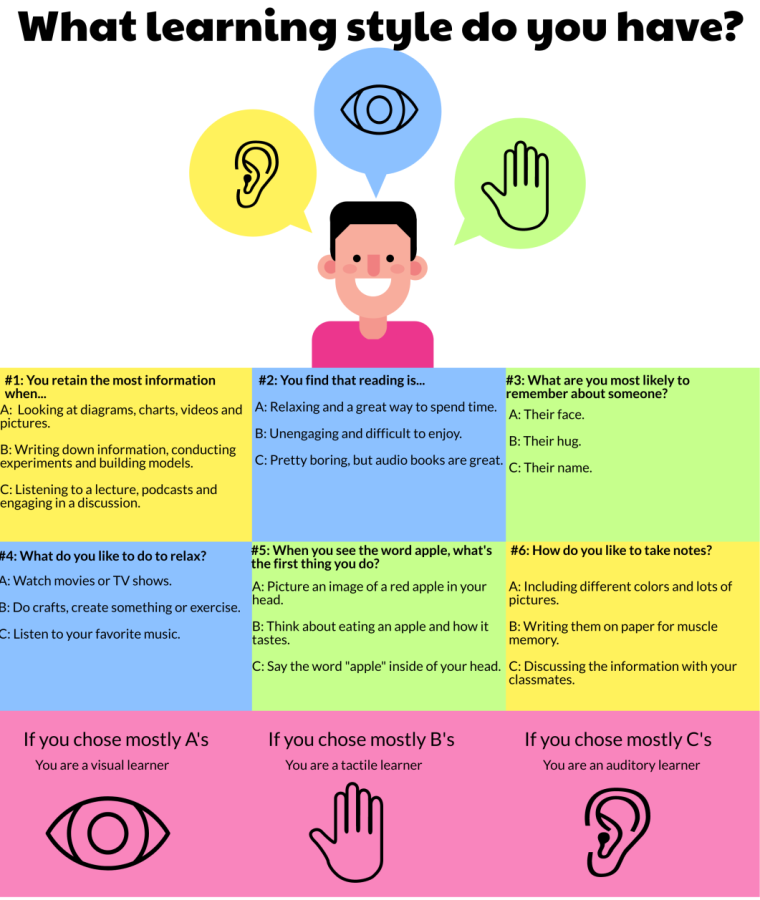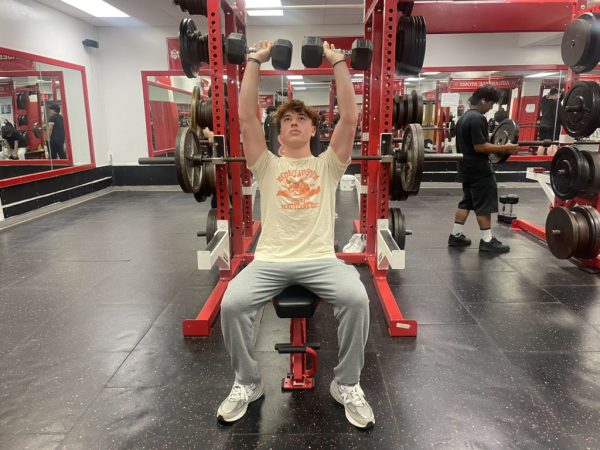Study methods for each learning style
One of AHS’ most recognizable elements is the diversity at the school. That being said, people learn and develop knowledge in many ways. Some learn best by practicing, others by watching or listening. There are many learning styles used by students, three of them being more common: Tactile, auditory, and visual.
Junior Aisha Ismael demonstrates a tactile learning style, doing things hands-on in order to learn.
“I like taking handwritten notes because it really forces me to think about the information and remember it.” Ismael said. “To study, I like to look through my notes and work through practice problems to test my knowledge.”
Not all students benefit from these activities.
Senior Jasa Gellert takes a more visual approach to learning, doing the best when reading and writing materials as well as watching demonstrations.
“I like to watch things being done and take notes because I can process it fully and gain a better understanding,” Gellert said. “When I study, I just look at my notes as a refresher.”
Gellert uses a visual style of learning. Reading text-heavy lessons and looking at graphs and charts is how she understands best.
Students with an auditory learning style benefit the best from lectures, discussions or any other materials and activities that allow them to soak in information by listening to it.
“I like when my teachers talk through lessons, it just clicks better in my mind. I practice through problems and often like to visit my teachers and have them talk me through anything I don’t understand,” senior Daniel Diaz said.
Learning styles often overlap or are used with each other, not a one-and-done deal. Often, students like gaining information through a variety of ways such as seeing problems being worked through but also getting to practice it themselves. Typically, students need a style of teaching that can appeal to more than one learning style.
Due to the number of students in each class, it is hard to adapt to the needs of each learning style. However, many teachers still try their best to take a mixed approach to their lessons so every student has an equal opportunity to learn and grow.
Gellert applauds one of her teachers for the freedom of learning they grant students.
“My teacher gives a lot of flexibility in terms of what we do and how we learn,” Gellert said. “They basically give us the needed information for the lesson then let us go about learning however each person wants.”
Gellert appreciates this because she is able to work with her friends who have similar learning styles to better understand the material.
Ismael also offers her props to one of her teachers.
“One of my teachers does an excellent job at appealing to all the different learning styles. They explain the core foundations of the material through speech and with visual aids, then they talk through the problem while they show us how to work through it on the board,” Ismael said. “After they give us the information, we are given time to work through practice problems with our classmates.”
However, students find that even after using certain study methods, some classes are hard to study for.
“Classes like history are all just dates and places, things to remember. Of course, there are some applications of the knowledge like writing assignments, but the core foundations are those plain facts. That’s why how teachers teach in the classroom is so important,” Diaz said.
With the diversity at Annandale growing more and more, it’s more important for students to understand how they best study and process information so they can create the best learning environment for themselves and set up healthy and effective study habits. Additionally, it is equally important for teachers to realize the different learning needs of their students and plan lessons and work that can benefit each learning style.








